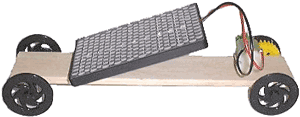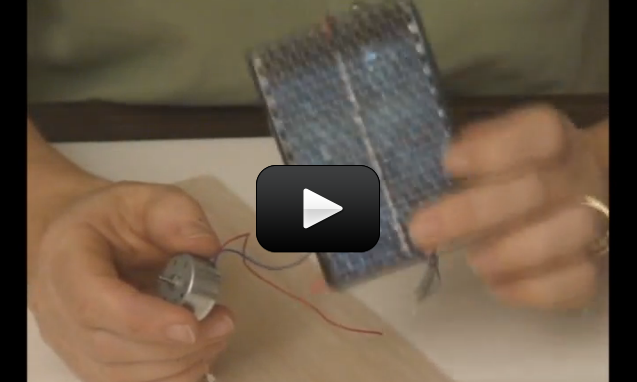 Solar energy (power) refers to collecting this energy and storing it for another use, like driving a car. The sun blasts 174 x 1015 watts (which is 174,000,000,000,000,000 watts) of energy through radiation to the earth, but only 70% of that amount actually makes it to the surface. And since the surface of the earth is mostly water, both in ocean and cloud form, only a small fraction of the total amount makes it to land.
Solar energy (power) refers to collecting this energy and storing it for another use, like driving a car. The sun blasts 174 x 1015 watts (which is 174,000,000,000,000,000 watts) of energy through radiation to the earth, but only 70% of that amount actually makes it to the surface. And since the surface of the earth is mostly water, both in ocean and cloud form, only a small fraction of the total amount makes it to land.
A solar cell converts sunlight straight into electricity. Most satellites are powered by large solar panel arrays in space, as sunlight is cheap and readily available out there. While solar cells seem ‘new’ and modern today, the first ones were created in the 1880s, but were a mere 1% efficient. (Today, they get as high as 35%.) A solar cell’s efficiency is a measure of how much sunlight the cell converts into electrical energy.
We’re going to use solar cells and the basic ideas from Unit 10 (Electricity & Robotics) to build a solar-powered race car. You’ll need to find these items below. Note – if you have trouble locating parts, check the shopping list for information on how to order it straight from us.
- Solar cell
- Solar motor
- Foam block (about 6” long)
- Alligator clip leads
- 2 straws (optional)
- 2 wooden skewers (optional)
- 4 milk jug lids or film can tops
- Set of gears, one of which fits onto your motor shaft (most solar motor kits come with a set), or rip a set out of an old toy
Here’s what you do:
[am4show have=’p8;p9;p11;p38;p92;p22;p49;p75;’ guest_error=’Guest error message’ user_error=’User error message’ ]
Download Student Worksheet & Exercises
How does a solar cell work? Solar cells are usually made of silicon. Sunlight is made of packets of energy called photons (we covered this in Unit 9). When photons hit the silicon, one of three things can happen: the photons can pass straight through the silicon if they have a low enough energy; they can get reflected off the surface; or (and this is the fun part) they get absorbed and the electrons in the silicon get knocked out of their shell.
Once knocked out of orbit, the free electrons start flowing through the silicon to create electricity. The solar cells are structured is such a way as to keep the electricity flowing only in one direction. The electron flow created is DC current (refer to Unit 10).
The solar cells you can buy from stores require huge amounts of energy in creating the solar cell, which is the primary downside. You need high temperatures, big vacuum pumps, and lots of people to make a set of solar cells. However, if we focus just on the physics of the solar cell, then we can easily create our own solar battery and other solar cell projects using household items. While these cells won’t look as spiffy as the ones from the store, they still produce electricity from sunlight.
Using the same solar cell, you can also build a Wind Turbine and a Solar Boat.
Exercises Answer the questions below:
- Most solar cells are made of what material?
- Hydrogen
- Aluminum
- Silicon
- Titanium
- Name one benefit of solar cells and one drawback of using them for electricity.
- Benefit:
- Drawback:
- Electrical current begins flowing when:
- Sunlight hits an atom
- Electrons are knocked out of orbiting atoms
- Protons get charged
- An atom’s nucleus splits
[/am4show]


The solar cell in Brian’s electronics kits aren’t intended to drive motors. You will need to purchase a solar cell rated for 3V or more.
My car is not working! I am using the solar cell from Brian’s electronics kit and a normal 3V DC motor.
Hi there, this is me Skye
Me and my mom where wondering, where do we get the “kit?”
As well as, is there any kind of kit my mom can order online that will have most of the materials for the experiments…?
Thank you in advance- Skye